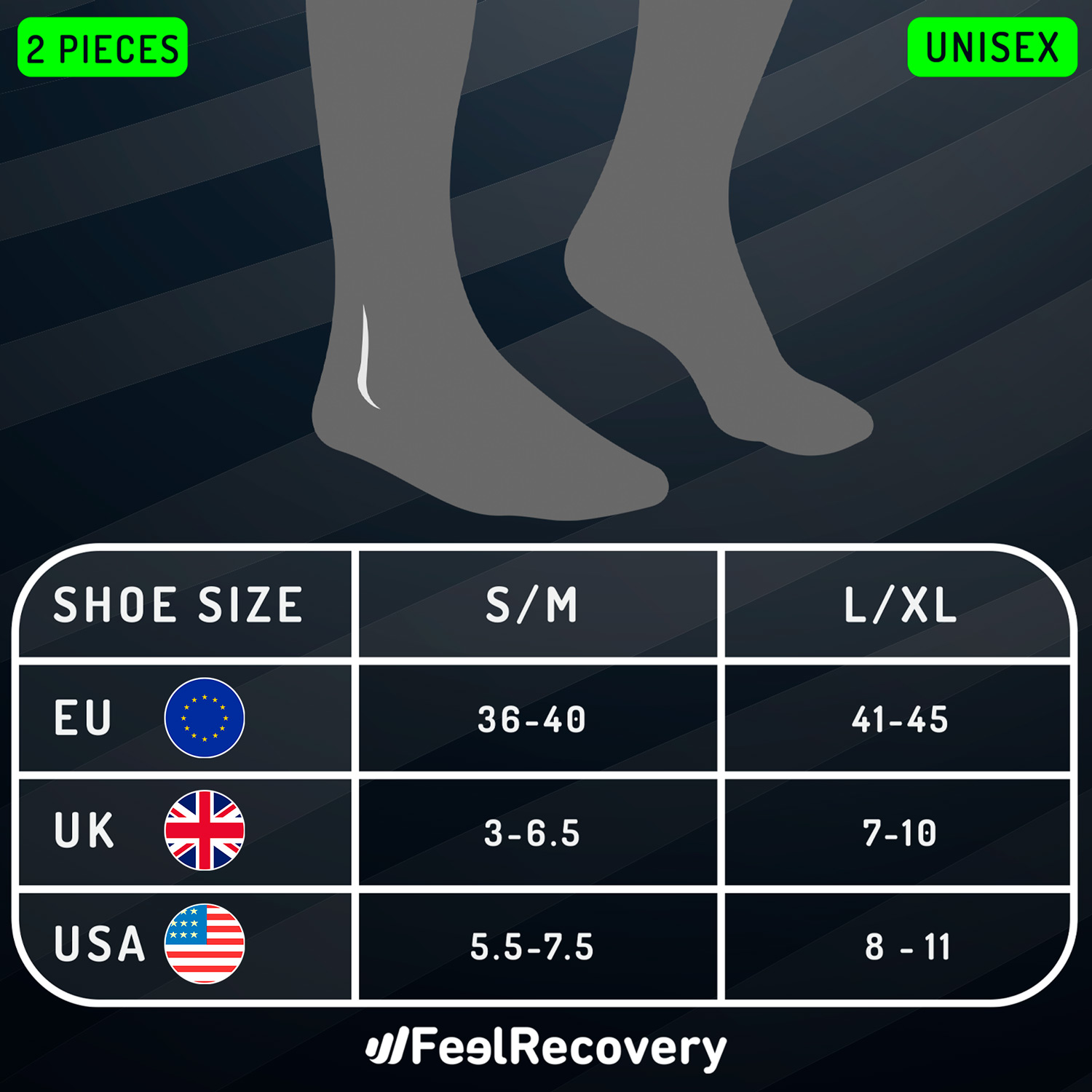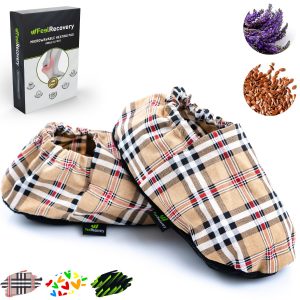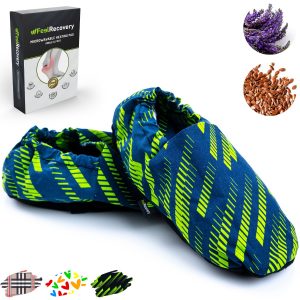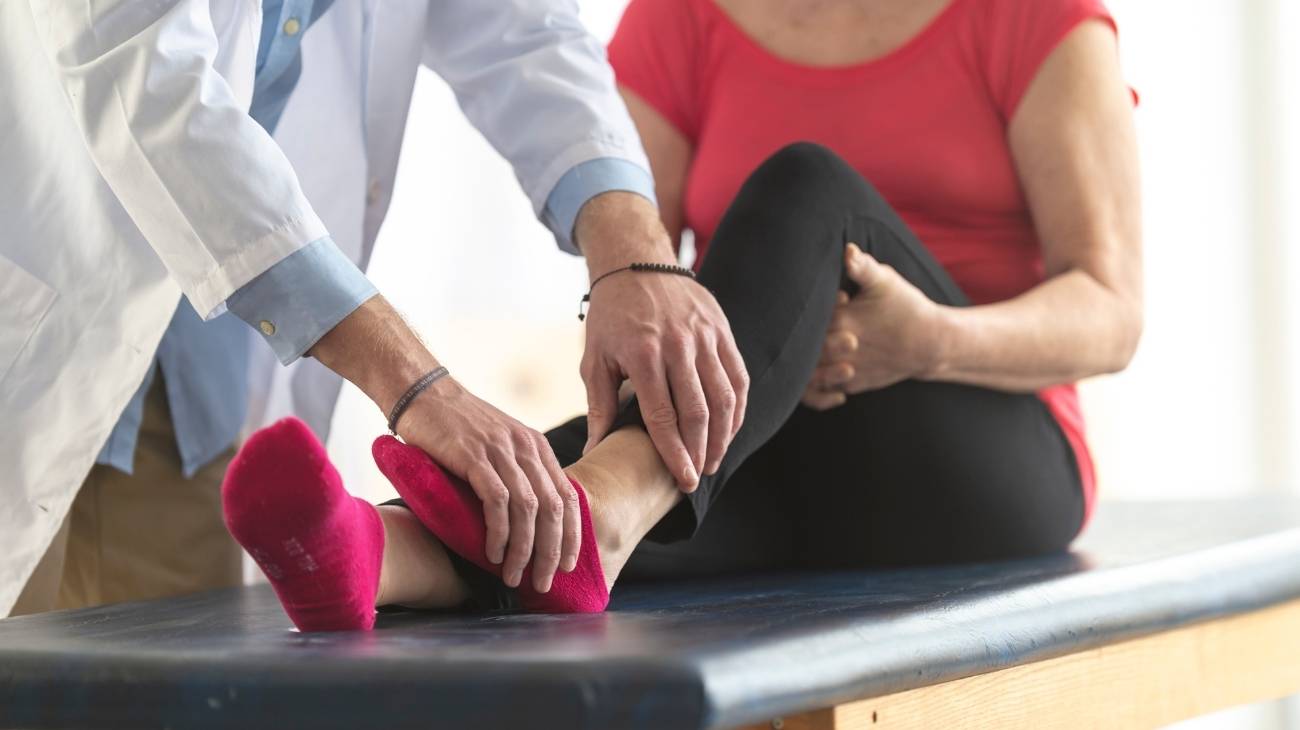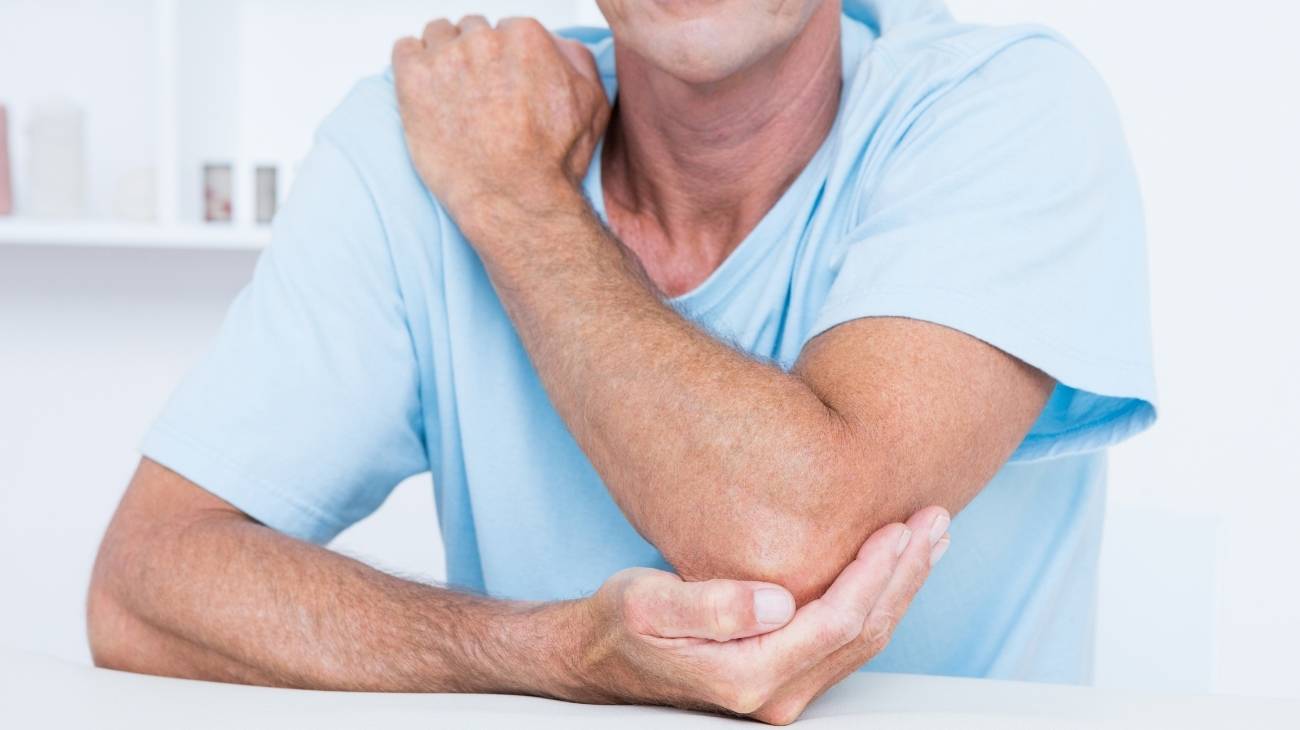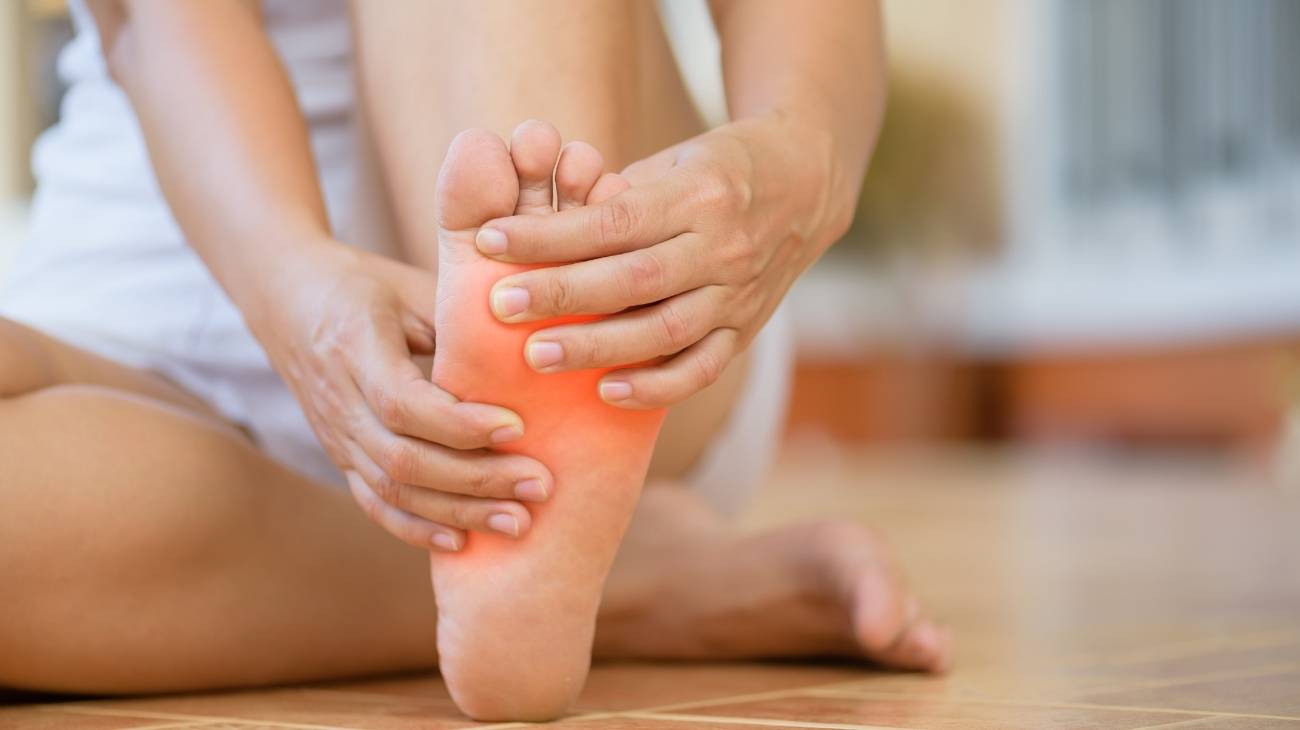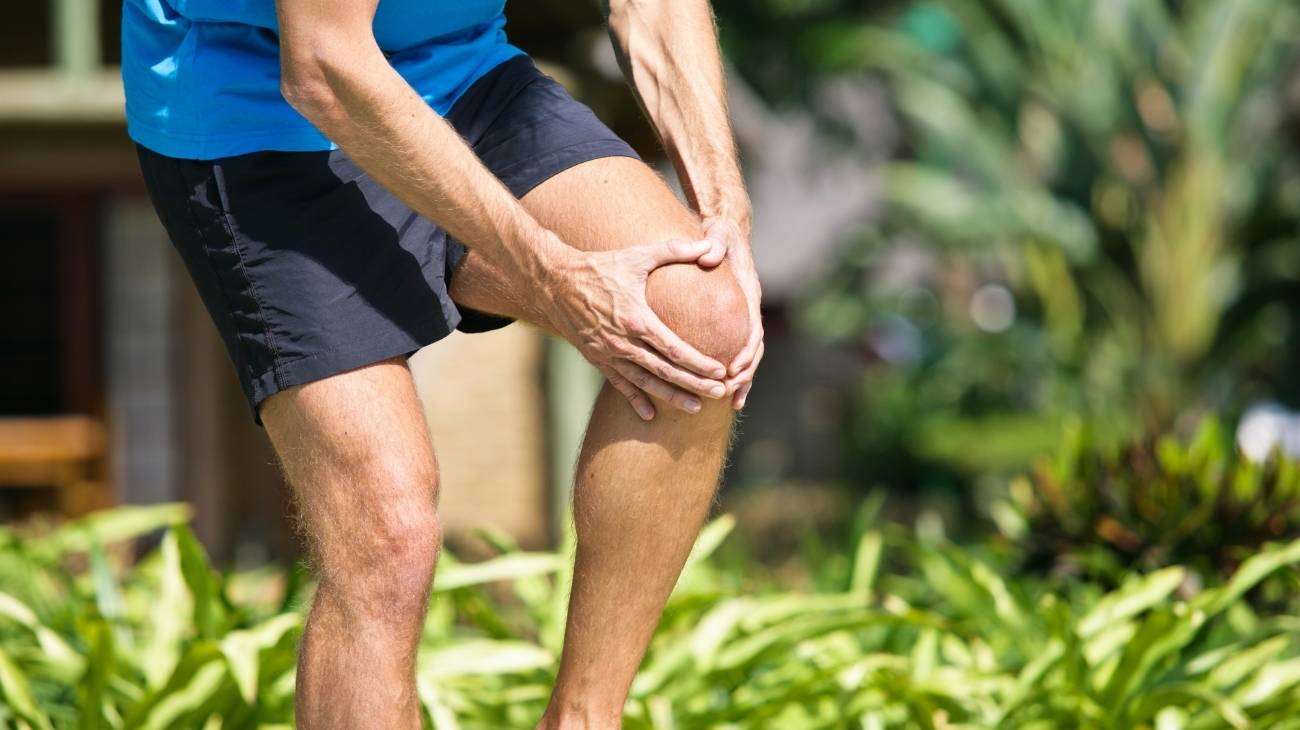- What is ankle osteoarthritis or joint inflammation in the ankle?
- What are the causes and risk factors for osteoarthritis of the ankle?
- Best products for ankle arthritis
- Main symptoms that warn us of arthritis of the ankle
- What treatments are available to improve the symptoms of osteoarthritis of the ankle?
- What methods of prevention for osteoarthritis of the ankle are the most effective?
If your ankle is a different size than usual and the skin is reddish in colour, you should pay attention because you may be suffering from osteoarthritis. You need to know what this inflammatory disease is and what are the causes and factors that give rise to it. You will find this information in the following paragraphs.
In addition, we will also explain in a simple way the symptoms that can appear in your body and that will help you to detect the presence of osteoarthritis so that you can see a doctor. Finally, we will introduce you to the most modern treatments that can be applied to the tibioperoneal astragal joint, so let's get started.
What is ankle osteoarthritis or joint inflammation in the ankle?
Osteoarthritis of the ankle joint, located in the ankle, is a disease that increases in progression and symptoms over time, and is therefore considered a degenerative disease. It is the gradual loss of the hyaline articular cartilage that covers the bones.
This loss of collagen causes severe pain when walking because the bones touch each other, causing inflammation and muscle stiffness. In some patients it is also possible to hear bone crunching sounds.
What are the causes and risk factors for osteoarthritis of the ankle?
If you want to know what are the factors that cause osteoarthritis in the ankle joint, you will have to read on because we will explain each of them in a simple way.
See below:
- Traumatisms, blows and fractures in the ankle joint: This is the main cause of the appearance of osteoarthritis in the ankle due to the effort that the articular cartilage has to make to recover and be able to function correctly.
- Congenital alterations of the ankle: People born with flat feet or other pathologies are prone to osteoarthritis in this area.
- Malfunctioning of the autoimmune system: Immune cells can act against the body and provoke attacks within the synovial membrane, causing the hyaline cartilage to be affected.
- Excess body weight: Obesity is one of the most influential risk factors in this type of inflammatory ailment because the space the cartilage has to cushion the movements between the bones is too small.
- Poor diet: Eating meat with a high amount of fat causes uric acid not to be expelled from the body, which leads to accumulations of crystals in the joint.
- Genetic factors: Hereditary agents in patients suffering from this pathology are present, although it is estimated that only 5% of people contract this disease due to genetic factors.
- Rheumatoid and post-traumatic arthritis: These types of ailments can also cause ankle osteoarthritis.
Best products for ankle arthritis
Bestseller
-
2 Ankle Compression Sleeve (Black/Gray)
£17,50 -
2 Ankle Compression Sleeve (Green/Navy)
£17,50 -
2 Ankle Compression Sleeve (Pink/Bordeaux)
£17,50 -
Ice Pack for Foot - Cold Therapy Socks (Black)
£21,95 -
Ice Pack for Foot - Cold Therapy Socks (Green)
£21,95 -
Ice Pack for Foot - Cold Therapy Socks (Pink)
£21,95 -
Microwavable Heated Slippers (Hearts)
£21,50 -
Microwavable Heated Slippers (Oxford)
£21,50 -
Microwavable Heated Slippers (Sport)
£21,50 -
Microwaveable Wheat Bag for Pain Relief (Hearts)
£17,50 -
Microwaveable Wheat Bag for Pain Relief (Oxford)
£17,50 -
Microwaveable Wheat Bag for Pain Relief (Sport)
£17,50 -
Sport Compression Socks (1 Pair) (Black/Gray)
£17,50 -
Sport Compression Socks (1 Pair) (Green/Navy)
£17,50 -
Sport Compression Socks (1 Pair) (Pink/Bordeaux)
£17,50
Main symptoms that warn us of arthritis of the ankle
It is important to know the symptoms and signs that warn of the presence of osteoarthritis in the synovial joint of the ankle. Because of this we will present you with an enumerative list with each of these manifestations that you do not have to ignore.
Take a look:
- Appearance of osteophytes or bone spikes: this is due to the accumulation of uric acid which causes the presence of crystals in the synovial sac.
- Swelling in the joint area: Swelling can occur due to fluid retention and lack of dilation of the blood vessels.
- Pain when walking: when the ankle is physically strained to perform a movement that requires effort and you feel pain, for example, every time you climb stairs, it can be a clear symptom to be taken into account.
- Creaking in the joint: especially when starting to walk or after a night's rest.
- Deviation and deformation of the foot: with respect to the tibia and fibula.
- Loss of strength in the foot: joint inflammation may cause the muscle-tendon structure not to work properly.
- Muscle stiffness: contracture in the soft tissues can be caused not only by the disease but also by a mental factor in the patient, who becomes stressed by the pain and compresses the tissues in the entire affected area.
- Limited movement: The inability to perform all the axial movements of the joint are symptoms to be taken into account when preventing osteoarthritis of the ankle.
- Tiredness and a feeling of pressure for no reason in the joint area: It is likely that the lack of space for the joint cartilage to function properly manages to produce fatigue and compression.
What treatments are available to improve the symptoms of osteoarthritis of the ankle?
The treatments used to combat osteoarthritis in the ankle joint are varied, and for this reason we will explain each of them in detail.
Alternative and complementary therapies
There are different rehabilitative approaches that can help to improve the symptoms of osteoarthritis of the ankle. The following are the most important alternative and complementary therapies currently available:
- Heat and cold therapy: both heat and cold have properties that benefit the treatment of osteoarthritis of the ankle. Heat improves the work of the blood vessels and thus activates the circulation to rehabilitate the cartilage tissue and the muscle-tendon structure. On the other hand, cold acts on the central nervous system, preventing pain signals from reaching the brain, and also helps to reduce swelling and redness. It can be applied with different elements, the most common being hot and cold water packs. Keep in mind that the therapy cannot exceed 20 minutes and you should start with heat, then follow with a cold bath and finish again with heat.
- Compression therapy: this type of therapy aims to fix the ankle joint so that the patient stops feeling pain, which is caused by cartilage wear and tear that may be causing the bones to touch. In this way, the affected area is deflated, the location of the ankle is corrected and the muscles and tendons are relaxed. There are different elements that can be applied to the affected area, but the most commonly used are special splints and bandages.
- Massage therapy: The aim of massage therapy is to bring about mental wellbeing in the patient. This is done by stimulating the muscles located in the legs and feet to reduce tension and thus allow the articular cartilage to have more space within the synovial membrane. The balance produced by this type of treatment not only helps the patient with osteoarthritis of the ankle, but also brings about changes in daily habits which reduce the symptoms of the pathology.
- Acupressure therapy: as with acupuncture, this ancient technique originated in China tries to stimulate trigger points so that the blood flow circulates better through the affected area. This causes a reduction in the stress generated by the osteoarthritis of the ankle itself, allowing the patient to find harmony and psychological sanity to cope with the inflammatory pathology. In this therapy, only the palms of the hands and the therapist's fingers are used to apply pressure to the body.
- Thermotherapy: by means of electric blankets, gel packs and immersion baths it is possible to transmit heat to the ankle area. This benefits the muscle structure because the treatment improves blood circulation and thus reduces stiffness and tension. In this way it is possible for the patient to feel less pain and to be able to move the joint better in daily activities. The time for applying thermotherapy must be controlled by a professional to avoid epidermal injuries.
- Natural remedies with the use of plants: by means of foot baths or infusions it is possible to reduce the pain of osteoarthritis of the ankle. This also helps to reduce inflammation in the area and improves the range of motion of the joint. The technique used in this case is to include natural herbs that help the general well-being of the patient. Different plants are used, but among the most popular are ginger, thyme, basil, bay laurel, boldo and mint. It is advisable to visit a doctor before turning to this type of therapy.
- Ultrasound: the development of osteoarthritis of the ankle can be delayed with the inclusion of this electronic treatment. It involves the application of sound waves at frequencies above 20,000 Hz, which causes the ankle muscles to relax and the joint to obtain a greater amplitude of the capsule with synovial fluid. For this treatment it is necessary to use special gels that work as a conductor of the pulses, which are imperceptible to the patient.
- Meditation and relaxation: the general well-being of the patient is the main objective of this meditation therapy. Through breathing and other concentration techniques, the aim is for the patient to reduce anxiety and find relaxation so that the bloodstream flows better between the vessels in the ankle joint. This will benefit the movements of the joint cartilage whenever the patient suffers from symptoms, as meditation can be applied anywhere.
- Aromatherapy: ginger, bay leaf and thyme are some of the herbs used in aromatherapy. This complementary treatment is based on the smells that the patient must perceive to provoke a psychological balance in order to cope with the symptoms of osteoarthritis of the ankle. When stress is unconsciously reduced, the patient's muscle tension is lowered, giving the joint cavity more space to coordinate movements, which leads to less pain.
- Acupuncture: the insertion of needles in specific areas of the body allows the patient's internal strength to be balanced and thus obtain a greater flow of positive energy. This harmony helps mental rebalancing by causing the tissues affected by osteoarthritis of the ankle to improve blood flow. In addition, the electrical impulses (if this variant is chosen) generated in the therapy act as an analgesic and thus reduce the pain in the ankle.
- Biofeedback: It should not be forgotten that osteoarthritis of the ankle leads to muscle stiffness caused, among other things, by the stress the patient suffers from the pain. This causes the patient to tense the muscles in the affected area, leading to further complications. The feedback therapy shows the patient by means of heart rate and blood pressure reports how stress affects the body and how the values decrease when the patient is relaxed. This helps the person to learn more about themselves and to improve their symptoms.
- Healthy lifestyle habits: Excessive uric acid, excessive stress on the ankle and too little rest at night are causes that must be taken into account in order to reduce the symptoms of osteoarthritis in the joint. To re-educate the patient, this complementary therapy is used to help correct the person's daily activities in order to reduce the pain and inflammation in the affected area.
Dietary supplements
Diacerein, glucosamine and chondroitin sulphate are components that work very well in this type of pathology. For this reason, these substances are included in food supplements to be combined with a healthy nutrition of the patient.
The dosage, the type of mineral, salt or vitamins to be taken and the type of presentation must be prescribed by a doctor. This avoids self-medication, which can cause severe damage to the progression of the disease and to the liver and stomach area.
Physiotherapy treatments
By means of exercises and radiation techniques it is possible to reduce the pain in the ankle joint. For this it is necessary to consult a doctor before visiting a professional therapist, because not all cases of this ailment can be solved with this therapy. The aim is to reduce inflammation and stress on the patient by stretching the muscles so that the hyaline cartilage can work in sufficient space.
Medications
Medications must be prescribed by the rheumatologist, so you should never self-medicate, as this can lead to intestinal and liver damage. It should also be borne in mind that self-medication increases the likelihood of the opposite effect of osteoarthritis of the ankle. The drugs used are usually painkillers, especially paracetamol, and anti-inflammatory drugs, although it is also possible to include corticosteroids in this therapy.
Surgery
If for some reason conventional treatments do not produce the desired result due to the progression of the disease, it is necessary to resort to surgical therapy. This treatment consists of correcting deviations of the bones and removing any debris that may swim inside the synovial membrane. In more extreme cases, it is necessary to implant an ankle prosthesis by means of an arthroplasty.
What methods of prevention for osteoarthritis of the ankle are the most effective?
To reduce the likelihood of osteoarthritis, several preventive measures should be taken into account, which are explained below:
- Avoid heavy lifting: This will help to keep the synovial capsule space at the right size, which will prevent injury to the hyaline cartilage.
- Lead a healthy lifestyle: Regular doctor's visits, healthy eating and regular exercise will help prevent the development of osteoarthritis of the ankle. Try not to smoke or drink alcohol.
- Low-impact sports: Take all necessary precautions for sports that require frequent jumps or impacts. Use elastic compression bandages and tights that support the ankle to keep the muscles and tendon structure aligned.
- Postural hygiene: Try not to jump if it is not necessary and have a correct posture when you have to go up or down stairs, climb obstacles or run without warming up your muscles beforehand.
- Maximum rest: Rest as long as your body asks for it. This will help your muscles relax and allow normal opening of the joint cavity with synovial fluid.
- Improve your diet: Choose foods rich in Omega 3 and vitamins D and E.
- Control your weight: Reduce your body weight to normal levels, according to your height and age.
- Visit your doctor frequently: for check-ups to detect early cartilage erosion or crystals within the synovial membrane. This is also advisable if you have suffered any trauma or blows to the ankle.
- Wear comfortable shoes: Footwear that helps not to compress the joint capsule and allows for proper mobility of your foot.
References
- Thomas, R. H., & Daniels, T. R. (2003). Ankle arthritis. JBJS, 85(5), 923-936. https://journals.lww.com/jbjsjournal/Citation/2003/05000/Ankle_Arthritis.26.aspx
- Saltzman, C. L., Salamon, M. L., Blanchard, G. M., Huff, T., Hayes, A., Buckwalter, J. A., & Amendola, A. (2005). Epidemiology of ankle arthritis: report of a consecutive series of 639 patients from a tertiary orthopaedic center. The Iowa orthopaedic journal, 25, 44. https://www.ncbi.nlm.nih.gov/pmc/articles/PMC1888779/
- Valderrabano, V., Pagenstert, G., Horisberger, M., Knupp, M., & Hintermann, B. (2006). Sports and recreation activity of ankle arthritis patients before and after total ankle replacement. The American journal of sports medicine, 34(6), 993-999. https://journals.sagepub.com/doi/abs/10.1177/0363546505284189
- Michelson, J., Easley, M., Wigley, F. M., & Hellmann, D. (1994). Foot and ankle problems in rheumatoid arthritis. Foot & ankle international, 15(11), 608-613. https://journals.sagepub.com/doi/abs/10.1177/107110079401501106
- Hayes, B. J., Gonzalez, T., Smith, J. T., Chiodo, C. P., & Bluman, E. M. (2016). Ankle arthritis: you can’t always replace it. JAAOS-Journal of the American Academy of Orthopaedic Surgeons, 24(2), e29-e38. https://journals.lww.com/jaaos/Abstract/2016/02000/Ankle_Arthritis__You_Can_t_Always_Replace_It.10.aspx
- Aletaha, D., & Smolen, J. S. (2018). Diagnosis and management of rheumatoid arthritis: a review. Jama, 320(13), 1360-1372. https://jamanetwork.com/journals/jama/article-abstract/2705192
- Firestein, G. S. (2003). Evolving concepts of rheumatoid arthritis. Nature, 423(6937), 356-361. https://www.nature.com/articles/nature01661
- Meenan, R. F., Gertman, P. M., & Mason, J. H. (1980). Measuring health status in arthritis. Arthritis & Rheumatism, 23(2), 146-152. https://onlinelibrary.wiley.com/doi/abs/10.1002/art.1780230203
- Fries, J. F., Spitz, P., Kraines, R. G., & Holman, H. R. (1980). Measurement of patient outcome in arthritis. Arthritis & Rheumatism, 23(2), 137-145. https://onlinelibrary.wiley.com/doi/abs/10.1002/art.1780230202
- McInnes, I. B., & Schett, G. (2011). The pathogenesis of rheumatoid arthritis. New England Journal of Medicine, 365(23), 2205-2219. https://www.nejm.org/doi/full/10.1056/NEJMra1004965














